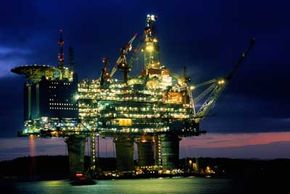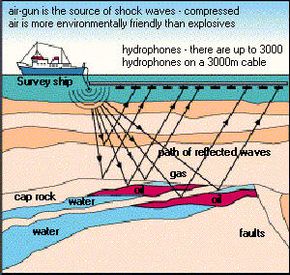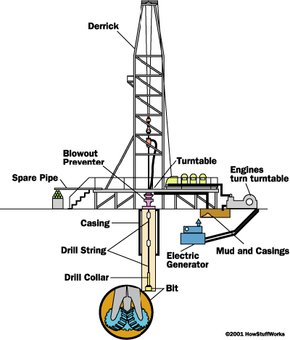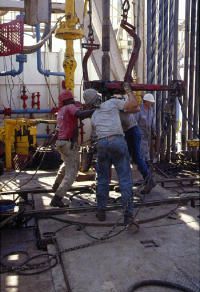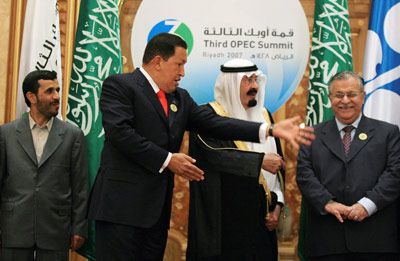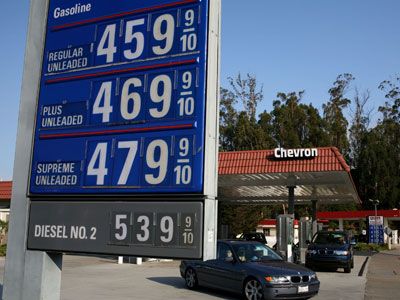Not all oil is accessible on land or in shallow waters. You can find some oil deposits buried deep under the ocean floor. Reaching these oil deposits is dangerous, but if done correctly, it can also be rewarding. If things go wrong, however, the results can be deadly both for oil workers and the surrounding environment.
Using sonic equipment, oil companies determine the drilling sites most likely to produce oil. Then they use a mobile offshore drilling unit (MODU) to dig the initial well. Some units are converted into production rigs, meaning they switch from drilling for oil to capturing oil once it's found. Most of the time, the oil company will replace the MODU with a more permanent oil production rig to capture oil.
There are four main types of MODUs:
- A submersible MODU usually consists of a barge that rests on the sea floor at depths of around 30 to 35 feet (9.1 to 10.7 meters). On the barge's deck are steel posts that extend above the water line. A drilling platform rests on top of the steel posts. These rigs are typically used in areas with calm water.
- A jackup is a rig that sits on top of a floating barge. A ship tows the barge to the drilling site. Once positioned, the jackup can extend legs down to the sea floor. The legs are loaded in such a way that they don't penetrate the floor. Once each leg is secure, the jackup continues to ratchet the legs so that the platform rises above the water level. This keeps the rig safe from tidal motions and waves. Jackups can operate in depths of up to 525 feet (160 meters).
- Drill ships are ships that have a drilling rig on the top deck. The drill operates through a hole in the hull. Drill ships can pilot to the drill site and then use a combination of anchors and propellers to correct for drift as the rig drills for oil. They can operate in deep water conditions.
- Semisubmersibles float on the surface of the ocean on top of huge, submerged pontoons. Some have propulsion systems, which allow them to navigate to drilling sites under their own power while others require a second vessel to tow them to the right location. Most use several anchors -- up to a dozen -- that help maintain the structure's orientation. Computers control the tension on each anchor chain to correct for drift. Some can convert from drilling rigs to production rigs, reducing the need for a second rig to take its place once oil is found.
The MODU's job is to drill down into the ocean's floor to find oil deposits. The part of the drill that extends below the deck and through the water is called the riser. The riser allows for drilling fluids to move between the floor and the rig. Engineers lower a drill string -- a series of pipes designed to drill down to the oil deposit -- through the riser.
At the sea floor is the blowout preventer (BOP). The blowout preventer has a pair of hydraulically-powered clamps that can close off the pipe leading up to the rig in the case of a blowout. As the rig drills down, engineers must add more pipe to the drill string. Each section of pipe is about 30 feet long (9.1 meters).
To add stability to the well, the engineers use metal casings, much as they do with land-based oil rigs. These casings help keep the well from collapsing in on itself. Each casing is lined with cement walls. Casings get narrower as the well gets deeper. Oil companies use progressively smaller drill bits as the well's depth increases. At each annulus -- the spot where a narrower casing joins with a wider one -- engineers use a liner hanger O-ring to seal the two sections together.
When the MODU hits oil, engineers must seal the well to prepare it for a production rig. The engineers will use a pair of plugs to seal off the well bore. The bottom plug sits near the oil deposit. Drilling mud or seawater provides the pressure to hold the plug in place while the engineers place a top plug to cap the oil well. Then the well is ready for a production rig to take over. Offshore production rigs work in a similar way to land-based oil rigs.
With all of this oil-drilling technology in use, and new methods in development, the question remains: Will we have enough oil to meet our needs? Current estimates suggest that we have enough oil for about 63 to 95 years to come, based on current and future finds and present demands.
For more information on oil drilling and related topics, including oil refining, check out the links on the next page.
